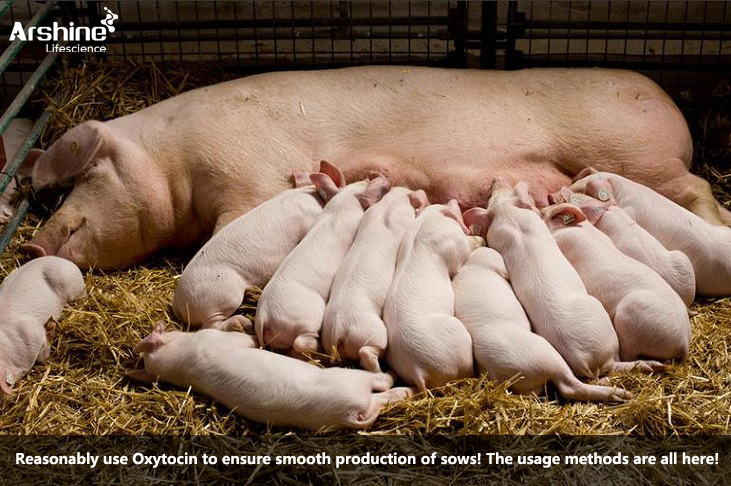Notifications

I. Production of Oxytocin
Endogenous oxytocin primarily originates from the hypothalamus but is also widely distributed in organs such as the uterus, ovaries, testes, adrenal glands, thymus, and pancreas. During the parturition process in sows, oxytocin production can be stimulated by massaging the sow's udder and by piglets suckling, which accelerates parturition. Currently, in large-scale pig farms, prostaglandin F2a is used as an oxytocin analog. When the sow's uterus lacks contraction strength, prostaglandin F2a can be administered intravenously to increase the sow's productivity.
II. Functions of Oxytocin
The uterine muscle layer has oxytocin receptors with high affinity, which increase in number in the late stages of pregnancy and further increase during parturition, leading to increased sensitivity of the uterus to oxytocin. Oxytocin can also promote the synthesis of prostaglandin F2a in the uterine endometrium, resulting in strong uterine contractions.
Oxytocin can stimulate the contraction of the smooth muscle of the fallopian tubes, playing an important role in the movement of sperm and eggs in the fallopian tubes.
Oxytocin can stimulate the contraction of alveolar epithelial cells in the mammary glands, promoting milk let-down. Therefore, after using oxytocin, the secretion of milk in sows increases, allowing piglets to suckle on colostrum promptly.
III. Application of Oxytocin
Oxytocin can be used during parturition to manage prolonged labor, dystocia, and uterine inertia in sows. However, if the sow's birth canal is obstructed, oxytocin should not be used. Postpartum use of oxytocin can promote the expulsion of fetal membranes and lochia.
Before artificial insemination, adding 10 international units (IU) of oxytocin to the insemination bottle can increase the conception rate by 6% to 22% in one insemination.
By utilizing the milk let-down function of oxytocin, oxytocin can be used to treat sows with blocked milk ducts or low milk production.
IV. Biological Activity and Effects of Oxytocin The biological half-life of oxytocin in the body is only 3 to 10 minutes, and it is even shorter at high concentrations. Oxytocin is mainly cleared by the liver and excreted from the kidneys in an inactive form. Since oxytocin has a relatively short duration of action in the sow's body, the sow's parturition process should be promptly observed after using oxytocin to check for the expulsion of piglets and fetal membranes and take effective measures. The interval between multiple oxytocin administrations should be controlled at around 20 to 30 minutes.
V. Risks of Improper Use of Oxytocin
Oxytocin promotes strong uterine contractions. Injecting oxytocin when the sow's cervix is not dilated can cause piglets to be trapped in the uterus, which is not conducive to parturition. Injecting oxytocin when the birth canal is obstructed can cause strong uterine contractions, leading to the compression of piglets and causing piglet asphyxia.
High-dose oxytocin injection may cause excessive fatigue of the uterine muscle, leading to spasms and worsening sow farrowing. Additionally, since oxytocin has concentration-dependent effects, long-term use of high-dose oxytocin will only increase the concentration of oxytocin used in the farrowing room, eventually leading to poor or ineffective use of oxytocin in the farrowing room.